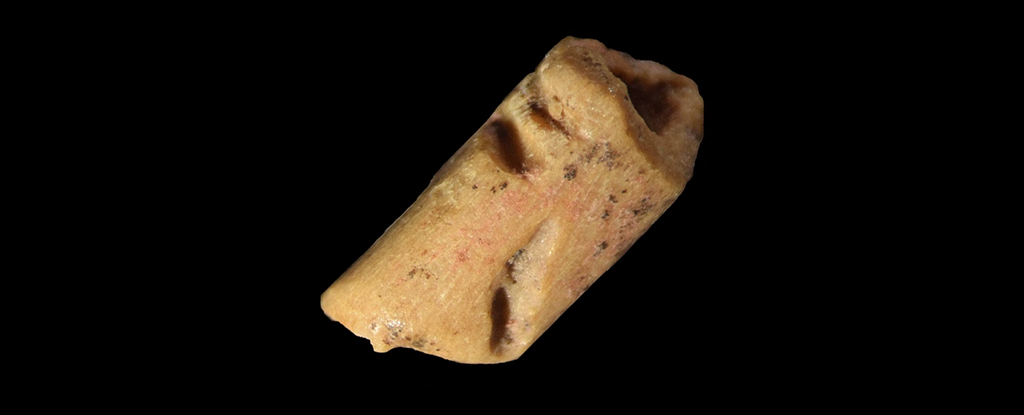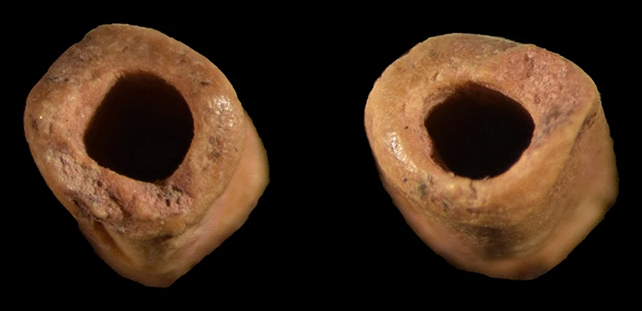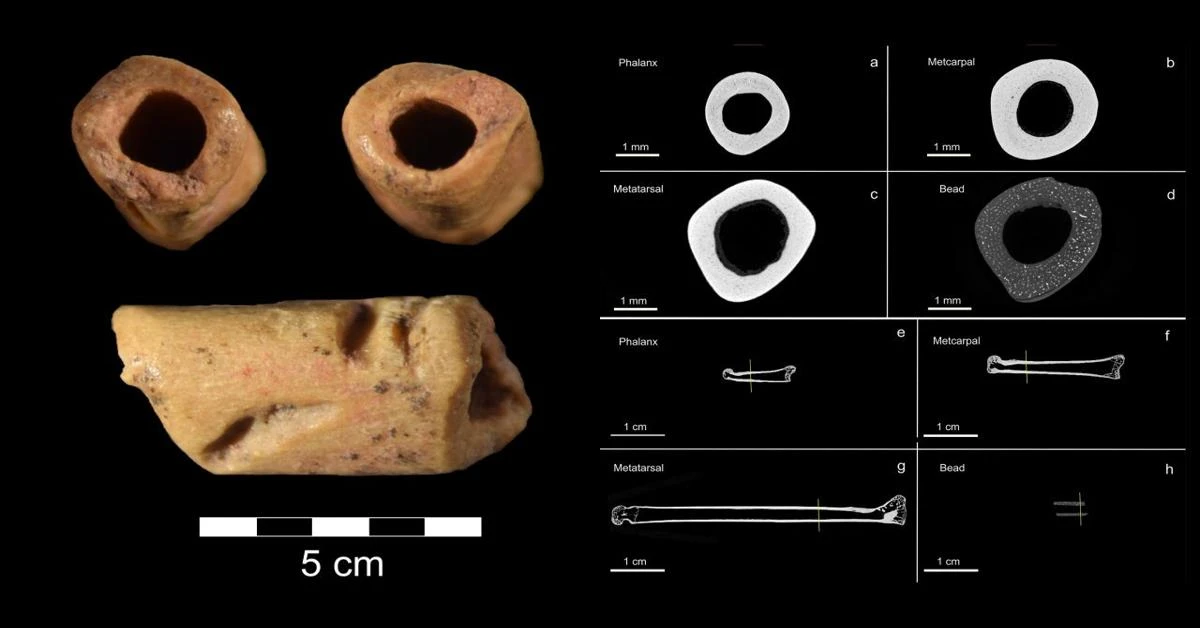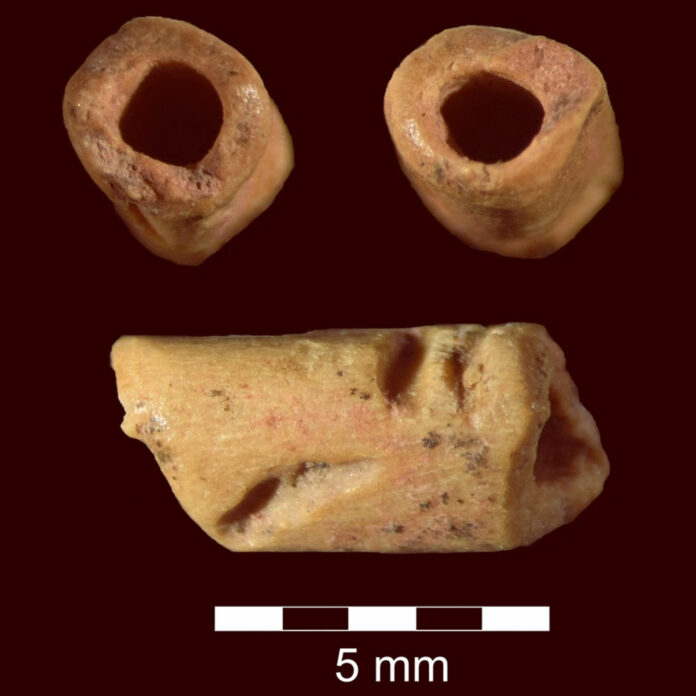In a groundbreaking discovery at the La Prele Mammoth site in Converse County, Wyoming, archaeologists have unearthed what is believed to be the oldest bead ever found in the Americas. This ancient artifact, made from bone, dates back approximately 12,940 years. The La Prele Mammoth site, known for its significance in Clovis-era archaeology, continues to yield valuable insights into the lives and customs of early inhabitants of North America.
Discovery of the Ancient Bead

The La Prele Mammoth site was first excavated in 1987, revealing the remains of a Columbian mammoth (Mammuthus columbi) and offering a glimpse into the Clovis culture. Recent excavations at this site have uncovered several intriguing finds, including the tube-shaped bone bead. This bead, measuring about 7 millimeters in length with an internal diameter of 1.6 millimeters, represents a remarkable piece of prehistoric personal adornment.
Techniques Used to Uncover the Bead’s Origin
To determine the bead’s origin, the research team employed a sophisticated method known as zooarchaeology by mass spectrometry (ZooMS). This technique involves analyzing the collagen extracted from the bone to understand its chemical composition and trace its source. Professor Todd Surovell from the University of Wyoming and his team discovered that the bead was crafted from the metapodial or proximal phalanx of a hare (Lepus sp.).
Implications of the Discovery

This find provides the earliest secure evidence of the use of hare bones during the Clovis period. Although the use of hare bone for bead-making was common in western North America during the Holocene, this discovery pushes the practice’s origins back to at least the terminal Pleistocene. The study, published in Nature, highlights the bead as an important indicator of increasing cultural and social complexity among Paleolithic peoples. Beads, often used as personal ornaments, are significant markers of human evolution in cultural and social practices.
Analysis and Theories
The bead’s craftsmanship suggests it was intentionally created for adornment rather than being a byproduct of carnivore activity. The external grooves on the bead align with patterns typically made by human tools, such as stones or teeth. Additionally, the bead’s proximity to other cultural materials supports the hypothesis of human creation.
Historical Context and Broader Implications

This discovery extends the known tradition of bead-making with lagomorph bones back to the Early Paleoindian Period in the Rocky Mountain West. Similar beads have been found in Paleolithic sites across northeast Asia, such as Denisova Cave and Yana RHS. The techniques used in North America show parallels with those in Asia, suggesting possible cultural exchanges or independent development of similar practices.
Conclusion
The discovery of the oldest bead in the Americas at the La Prele Mammoth site offers a fascinating glimpse into the artistry and cultural practices of early North American inhabitants. This ancient artifact not only enriches our understanding of Clovis-era traditions but also connects the bead-making practices of prehistoric North America with those of ancient Eurasia. As research continues, the La Prele Mammoth site remains a crucial site for unraveling the complexities of early human societies.
